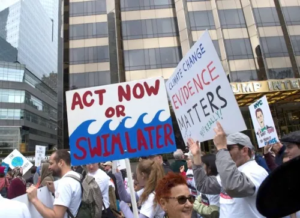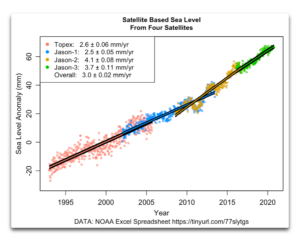by D. Burton, Apr 3, 2023 in ClimateChangeDispatch
CNBC and the Potsdam Institute (PIK) report that:
We’re halfway to a tipping point that would trigger 6 feet of sea-level rise from the melting of the Greenland Ice Sheet
PUBLISHED WED, MAR 29 202312:12 PM EDT By Catherine Clifford
KEY POINTS:
● Once people have cumulatively emitted approximately 1,000 gigatons of carbon in total, then the southern part of the Greenland Ice Sheet will melt eventually causing the sea level to rise by almost six feet.
● Once humans have cumulatively emitted approximately 2,500 gigatons of carbon in total, the whole Greenland Ice Sheet will eventually melt and the sea level rise would rise by 6.9 meters or 22.6 feet.
● And right now, now we are at approximately 500 gigatons of carbon emissions released.
Here’s the article.
Here’s the paper.
Like most things from PIK, this “study,” and this CNBC article, are nonsense. [emphasis, links added]
The best estimates are that since 1850, anthropogenic carbon emissions have totaled about 675 Gt of carbon (a/k/a PgC) (not 500).
Over that same period, the amount of CO2 in the atmosphere has increased by only about 135 ppmv CO2 = 287 PgC (gigatonnes carbon).
The difference is the amount removed from the atmosphere by natural negative feedbacks, such as absorption by the oceans, the greening of the Earth, and rock weathering.
(Aside: Petagram ≡ gigatonne ≡ Gt, and “PgC” means “petagram of carbon,” so 1 PgC = 1 Gt of carbon (GtC). 1 ppmv CO2 = 7.8024 Gt CO2 = 2.12940 PgC.)
Yet we’ve only gotten an estimated 1.02 to 1.27 °C of warming from all that CO2, and it’s beenaccompanied by negligible acceleration in sea-level trends:

….





